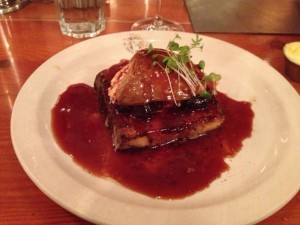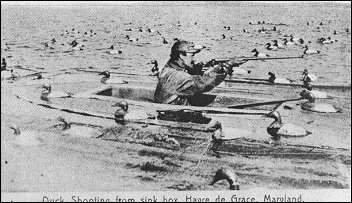I spent a day in Montreal, QC last week. I had forgotten how cold it can be up north. I quickly relearned that northerners find ways to snake through buildings and basements to get from point to point. Here are some of my travel notes from last Thursday:
Cords, shirt, thick sweater, run jacket, down parka, hat, hood, two pairs of gloves, hike socks, hike boots. That all was pretty good, except thighs would go so numb that I couldn’t feel them move. I stopped in Ogilvy’s on Sainte Catherine. Beautiful, elegant department store, Montreal’s first in 1860 something. Friendly woman, nice and inexpensive scarf added to cover my neck and chin. Onward.
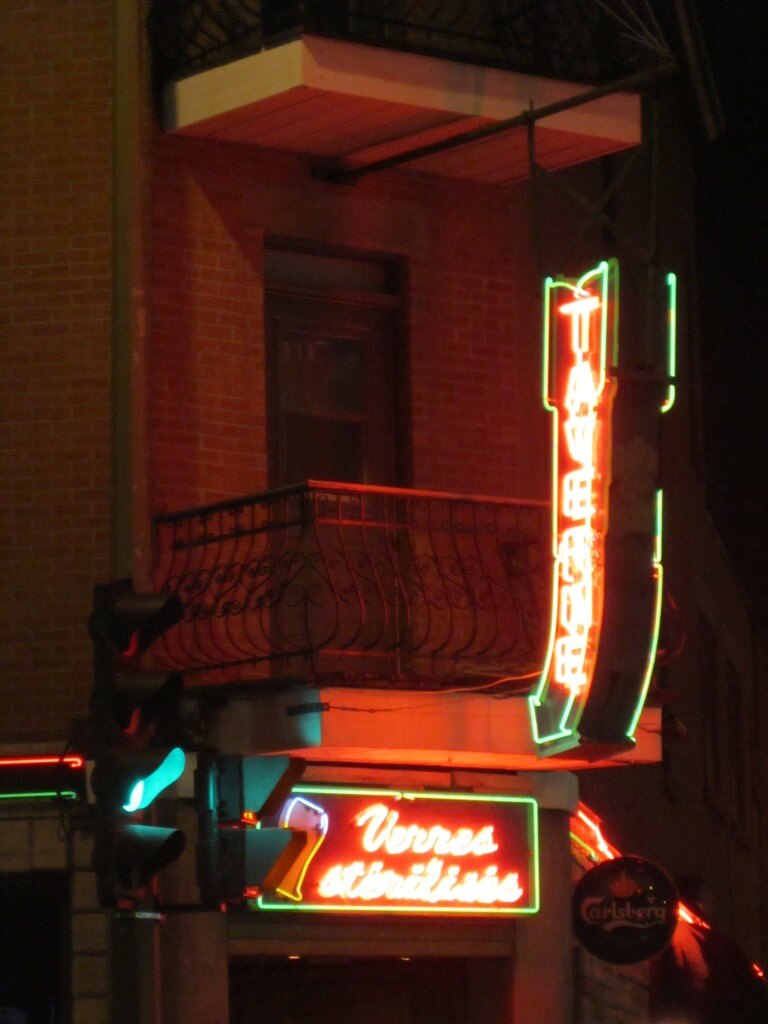
Good to know the glasses are clean. Mount Royal neighborhood, Montreal. RL Fifield 2013.
Monteral Metro FTW but I flunked bagels at St. Viateur. This trough of bagels poured from a wood fired oven. What a sight! So much so that I didn’t notice the A emporter sign above where I asked for bagels. Then I asked for a coffee, then went to sit down a la New York and flustered the staff. Alas! More in Europe today than North America. I chewed on dry bagel while the table next door got cream cheese and piles of lox. It was late morning, I was staying light for my dinner at Au Pied du Cochon.
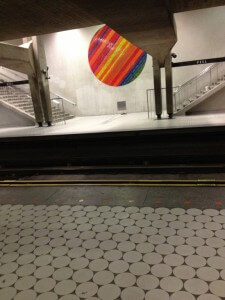
1960s Metro Peel station, Montreal. RL Fifield 2013.
Rode that transit pass hard and put it away wet. Metro to Jean-Talon. Bush-style sheds [click here for a photo] were empty of vendors in the chill. A middle eastern pastry stand indoors enthralled, little almond purses sparkled with glitter. Then to old city, which I expected to be gimmicky. The stone buildings were gorgeous, too bad they held nothing supporting a real community, just galleries, restaurants, tourist shops. Popped out at Bonaventure to see the 1940s Central Station, bustling with commuters, CN Railway workers (their tower attached, and a large hall of restaurants and stands feeding them), Art Deco murals surrounding the hall. Checked in on Amtrak’s Passport App on the McDonald’s wifi. I feel so defiled.
Next to Atwater market. The tiny 19th century houses found throughout the city enthrall in their detail and whimsy. Still, not much going on during this off-season for verdure, but picked up chocolate. 1931 building, strings of lights outside illuminate summer vendors, now ice and cars.
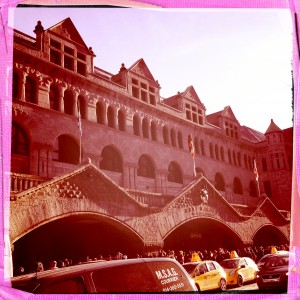
Windsor Station. RL Fifield 2013.
Windsor station. The problem with 1990s renovations of rail stations is that so much of the rail is replaced with blah mall-style finishes. They left an arrivals/departures board with a few photos, but besides the steel arches and clocks overhead, what made it a rail station was ripped away, a sports arena sits where the tracks and their Bush sheds were. I wondered if the station had survived just another 20 years, what sort of transit rebirth it might have experienced, versus this quiet space. Outside, a line of jersey-wearing fans waited for some game.
Off to the McCord [Museum]. It was okay, I wasn’t floored. Their Cartooning Calamity exhibit was thoughtful. Felt that their Montreal history exhibit was okay, but needed something. Adopt-an-Artefact stickers fueled some thinking.
Found myself killing time in a mall made by gutting multiple old department stores, linking indoor Montreal from Metro Peel to Metro McGill. Makes winter commuting bearable I suppose.
I’ll save the food I ate for another post, including a trip to Au Pied du Cochon and Taverne Square Dominion.

Food waiting to go out at Au Pied du Cochon. RL Fifield, 2013.






